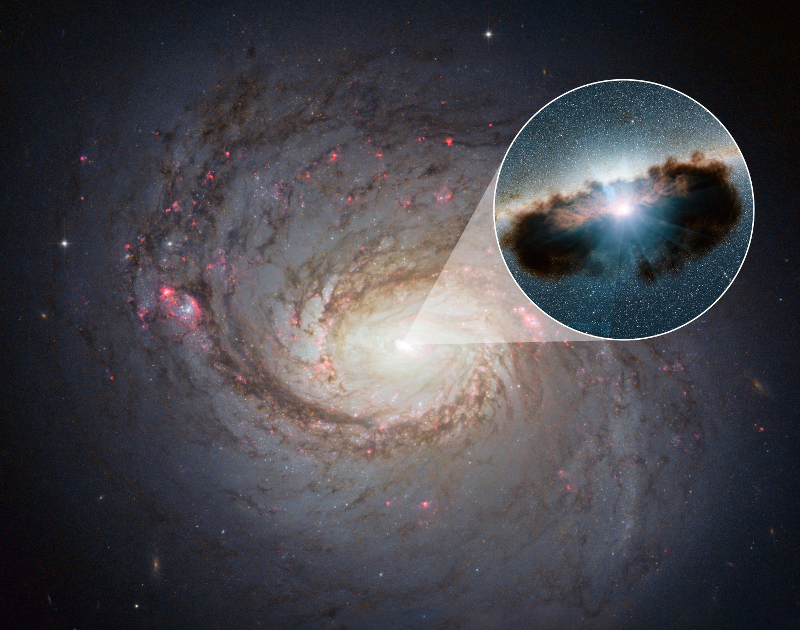
 Credit: NASA/JPL-Caltech
Credit: NASA/JPL-Caltech
Lumpy Donut
Science searches for the simplest explanation to explain the broadest range of phenomena. The unified model of active galaxies is an example of a simple idea that explains the wide range of behavior exhibited by the centers of active galaxies. Active galaxies come in variety of types: some show huge, narrow jets shooting from the center of the galaxy; other active galaxies show extremely bright, variable emission from the central region, with little or no evidence of jets. The unified model explains these cases in a simple way. In the unified model, the central powerhouse is a supermassive black hole hungrily devouring material that spirals into it. Surrounding the central black hole and its disk of accreting material is a thick ring or torus of dust, like a cosmic donut with a black hole at the center. In this model, we observe different types of active galaxies depending on how we view the system. If we're looking perpendicular to the torus and accretion disk, then we have an unobscured view of the central black hole. In this case, the active galaxy appears as a bright point source with no jet (since we're looking down the jet in this case). On the other hand, if we observe the central accreting black hole through the dust ring, the dust ring obscures the central black hole, but we have a better view of the powerful jets which shoot out perpendicular to the accretion disk around the black hole. X-rays produced near the supermassive black hole can partially penetrate the dust ring, allowing astronomers to measure the ring's thickness. Recent observations with NuSTAR and the XMM-Newton X-ray observatory have helped astronomers determine the structure of the dust ring around the supermassive black hole in the spiral galaxy NGC 1068 (alias M77), pictured above. In August 2014, NuSTAR observed a spike in the brightness of high-energy X-rays coming from NGC 1068. The high-energy X-ray spike was probably due to a clearing of the material blocking our view of the supermassive black hole, like a cloud passing the sun. This suggests that the ring is clumpy, not smooth, similar in structure to the artistic interpretation of the dust torus shown in the inset image above.
Published: December 21, 2015
<
HEA Dictionary ● Archive
● Search HEAPOW
● Other Languages
● HEAPOW on Facebook
● Download all Images
● Education ● HEAD
>

Each week the HEASARC
brings you new, exciting and beautiful images from X-ray and Gamma ray
astronomy. Check back each week and be sure to check out the HEAPOW archive!
Page Author: Dr. Michael F. Corcoran
Last modified Monday, 26-Feb-2024 17:11:01 EST


